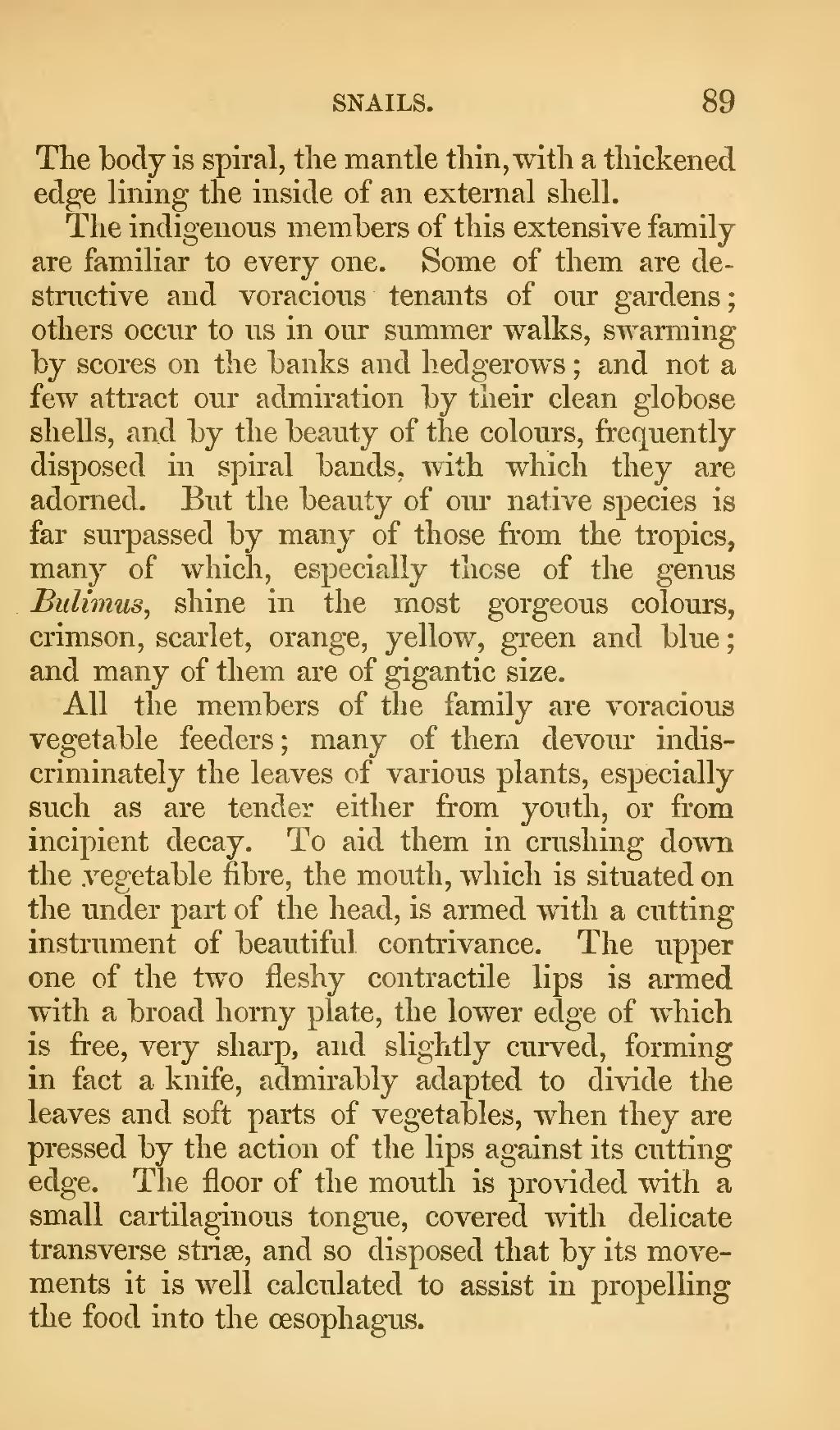The body is spiral, the mantle thin, with a thickened edge lining the inside of an external shell.
The indigenous members of this extensive family are familiar to every one. Some of them are destructive and voracious tenants of our gardens; others occur to us in our summer walks, swarming by scores on the banks and hedgerows; and not a few attract our admiration by their clean globose shells, and by the beauty of the colours, frequently disposed in spiral bands, with which they are adorned. But the beauty of our native species is far surpassed by many of those from the tropics, many of which, especially those of the genus Bulimus, shine in the most gorgeous colours, crimson, scarlet, orange, yellow, green and blue; and many of them are of gigantic size.
All the members of the family are voracious vegetable feeders; many of them devour indiscriminately the leaves of various plants, especially such as are tender either from youth, or from incipient decay. To aid them in crushing down the vegetable fibre, the mouth, which is situated on the under part of the head, is armed with a cutting instrument of beautiful contrivance. The upper one of the two fleshy contractile lips is armed with a broad horny plate, the lower edge of which is free, very sharp, and slightly curved, forming in fact a knife, admirably adapted to divide the leaves and soft parts of vegetables, when they are pressed by the action of the lips against its cutting edge. The floor of the mouth is provided with a small cartilaginous tongue, covered with delicate transverse striæ, and so disposed that by its movements it is well calculated to assist in propelling the food into the œsophagus.
